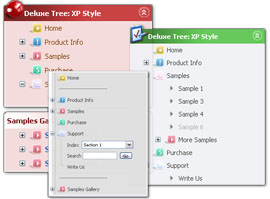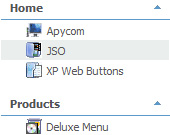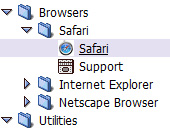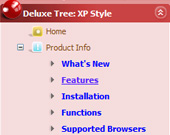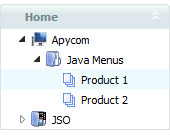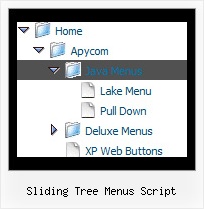Template: Sliding Tree Menus Script
Tree Javascript MSDN Library Look and Feel
The template emulates emulates MSDN Library look. To open submenus click on menu items.
The appearence of this template is determined by the following parameters:
- Toggle-mode support.
- Icons for expand and collapse buttons
- Animation effect for subitems
- Only one item can be expanded at the same time, var tcloseExpanded=1;
- Menu has a static position and is placed within the table cell
The template emulates emulates MSDN Library look. To open submenus click on menu items.
The appearence of this template is determined by the following parameters:
- Toggle-mode support.
- Icons for expand and collapse buttons
- Animation effect for subitems
- Only one item can be expanded at the same time, var tcloseExpanded=1;
- Menu has a static position and is placed within the table cell
Key features:
- Each item can have individual settings
- Unlimited number of sub levels
- Vertical orientation of the Tree Menu
- different speed for an animation for submenus
- Several menus on one page
- Personal CSS styles for separate menu elements
- Submenus expand/collapse on mouseover
- Relative/Absolute menu position
- Each item can have individual settings
- Unlimited number of sub levels
- Vertical orientation of the Tree Menu
- different speed for an animation for submenus
- Several menus on one page
- Personal CSS styles for separate menu elements
- Submenus expand/collapse on mouseover
- Relative/Absolute menu position

